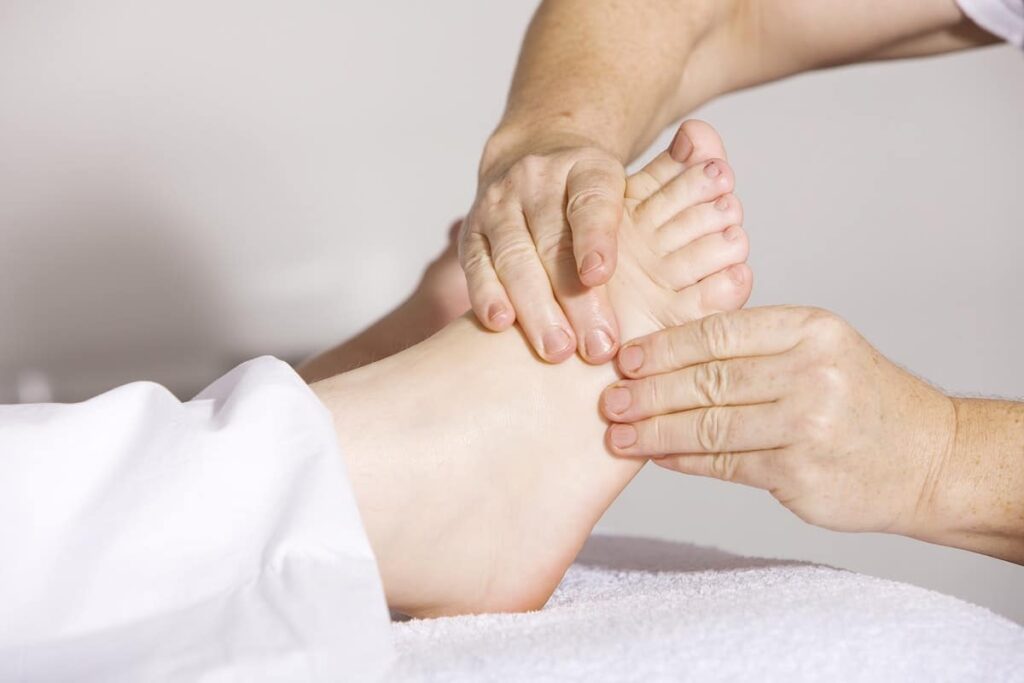Healthy feet serve as the foundation for an active lifestyle. In podiatry, preventive care focuses on protecting this foundation through daily routines and proactive care. Rather than waiting for pain or injury to develop, taking early steps can contribute to long-term mobility and comfort.
Routine foot care extends beyond occasional checkups. It includes how you choose footwear, how you move throughout the day, and how you respond to the first signs of discomfort. Podiatry places strong emphasis on these strategies because they address common issues before they progress.
Choosing Footwear That Promotes Alignment and Stability
Supportive shoes play a central role in maintaining alignment, especially when standing or walking for long periods. Podiatrists often assess footwear during visits to identify how it may contribute to issues like heel pain or arch strain. Shoes that offer cushioning, arch support, and a stable sole can help prevent imbalances that lead to overuse injuries or joint pain. The shape and structure of a shoe matter more than brand or fashion. Narrow toe boxes, flat soles, or heels lacking support tend to shift pressure in ways that affect the knees and hips over time. Rotating between multiple pairs of shoes may also reduce repetitive stress on the same points of contact.
Supporting Active Lifestyles With Strength and Mobility
Podiatry often includes evaluating how foot mechanics influence the rest of the body. Exercises that build ankle strength and improve foot mobility can reduce the risk of injury during movement. These simple movements—like toe raises, balance drills, and foot stretches—help stabilize the body and improve gait patterns.
Being proactive with foot conditioning is particularly valuable for runners, hikers, or anyone on their feet all day. Strength training and stretching routines may be tailored based on individual needs and history of pain. Even walking with increased awareness of posture and stride can reinforce healthy patterns.
Addressing Early Warning Signs Before They Escalate
Foot pain, stiffness, or changes in skin texture often serve as early indicators of underlying issues. Podiatrists examine symptoms that people may dismiss—such as persistent blisters, numbness, or pressure points that return after activity. Catching these signs early can prevent more serious complications. Diabetics, in particular, benefit from regular podiatry visits due to the increased risk of nerve damage and poor circulation in the feet. Monitoring foot health at home—such as checking for cuts, discoloration, or swelling—adds another layer of defense.
Custom orthotics or shoe inserts may be recommended based on a podiatrist’s evaluation. These tools help redistribute weight, correct gait imbalances, and support foot structure. While over-the-counter inserts offer general comfort, custom versions reflect your unique anatomy and movement patterns.Regular visits with a podiatrist also support prevention by tracking changes over time. From childhood through older adulthood, foot structure shifts in response to lifestyle and health conditions. Ongoing care helps adapt strategies as needed.
Start With Podiatry Early
Preventive podiatry works best when foot care becomes part of your wellness routine. Instead of waiting for discomfort to interfere with your mobility, build supportive habits now. Selecting quality footwear, engaging in foot-focused exercises, and scheduling periodic podiatry evaluations are small steps that contribute to long-term stability.

